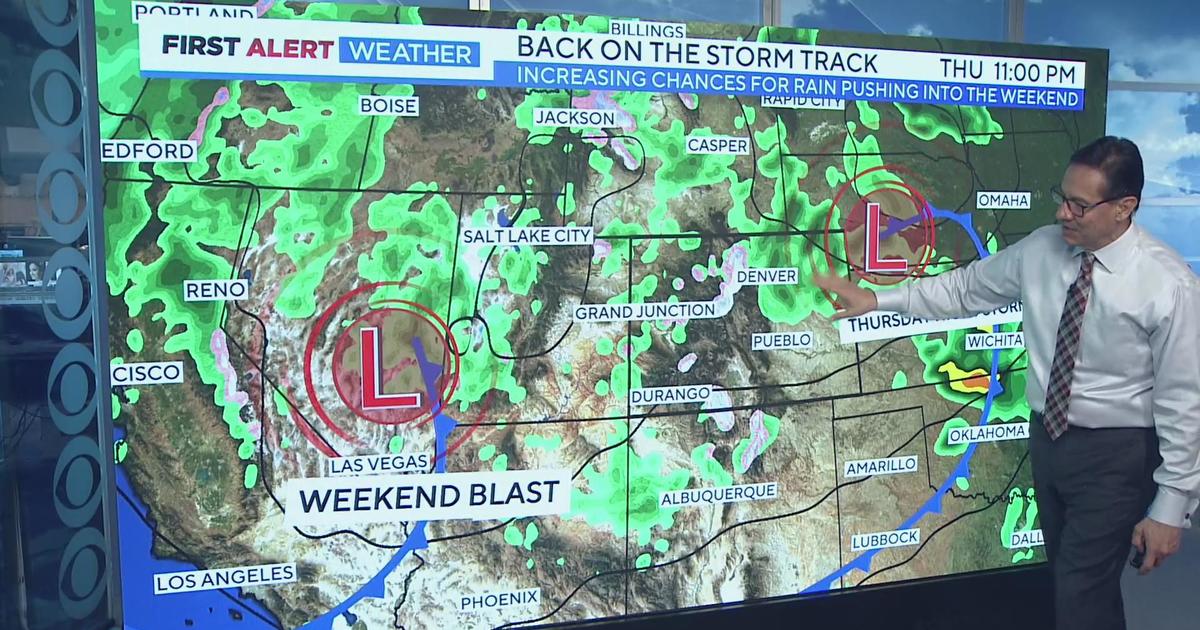Colorado Sits In A Moisture Fetch Traveling Thousands Of Miles
DENVER (CBS4) - The combination of a strengthening El Niño and the annual development of the North American Monsoon have worked together to keep Colorado's weather active in recent weeks, and that trend will continue into the near future.
The monsoon is a seasonal shift in the wind pattern where southerly winds bring moisture into Colorado from as far away as the Pacific Ocean and the Gulf of Mexico.
That moisture moves around throughout the season, steered by areas of high and low pressure in the upper atmosphere.
Currently a large ridge of high pressure sitting over Texas is keeping that part of the country hot and dry.
But the clockwise circulation around it is drawing moisture into Colorado from as far away as the tropics.
The result is a pretty good chance for widespread showers and thunderstorms when that moisture combines with daytime heating and our terrain.
As that ridge of high pressure shifts around, so does the plume of moisture circulating around it, and that means subtle changes to the forecast for coverage of storms each day.
By Thursday the ridge of high pressure should shift slightly west, putting Colorado under more of an influence of the drier and warmer air under that ridge. The result will be a slightly drier and warmer forecast heading into the weekend.
Although a drier and warmer trend is anticipated that doesn't mean we will be storm free.
By next week current indications show that the ridge of high pressure will shift back to the east bringing the moisture feed back into Colorado.
Monsoon storms are tricky because while you can often predict trends in storm coverage it is difficult to pinpoint exactly where storms will develop.
During monsoon season each afternoon brings the threat for showers and thunderstorms, but it doesn't mean we all get wet each day.
One of the biggest threats besides dangerous cloud-to-ground lightning from monsoon storms is the potential for locally heavy rain because the upper level winds over Colorado are often light during July which means the storms are slow movers.
Meteorologist Chris Spears writes about stories related to weather and climate in Colorado. Check out his bio or follow him on Twitter @ChrisCBS4.





